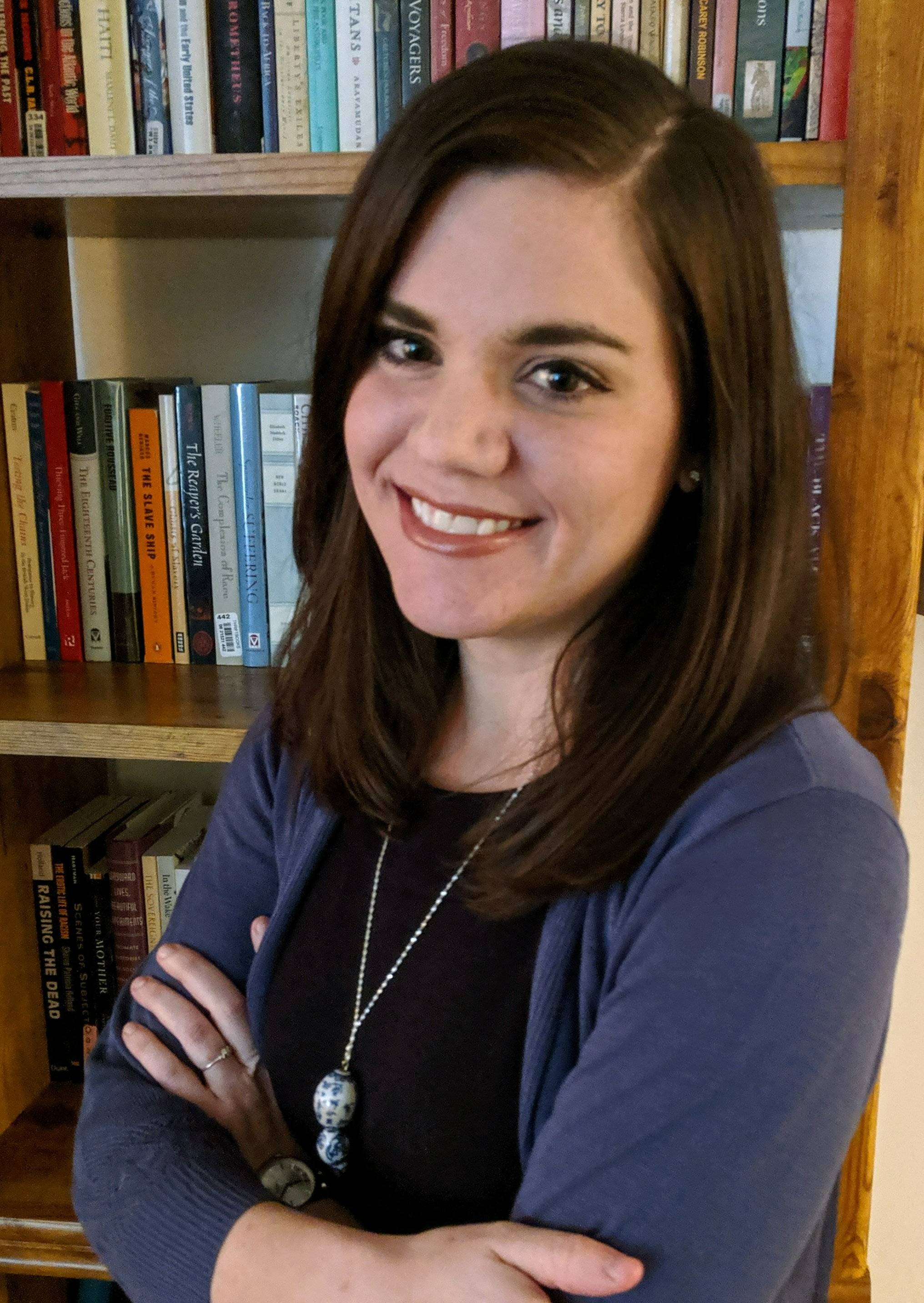
Ph.D., Vanderbilt University
Areas of Interest & Expertise
-
Early American and Colonial Literatures
-
Early Native American and Indigenous Studies
-
Early African Diaspora and African American Studies
-
Ecocriticism and Environmental Humanities
-
Queer Theory and Gender/Sexuality Studies
Selected Publications and Work in Press
-
The Rich Earth Between Us: The Intimate Grounds of Race and Sexuality in the Atlantic World, 1770-1830. Chapel Hill: University of North Carolina Press, 2024.
-
Co-Editor (with Jeremy Chow), Unsettling Sexuality: Queer Horizons in the Long Eighteenth Century. Newark: Delaware University Press, 2024.
-
“Plotting the Plantationocene with The History of Mary Prince.” ABO: Interactive Journal for Women and the Arts, 1640-1830 13, no. 1 (Summer 2023): 1-14. Special Pedagogy Issue: Teaching The History of Mary Prince. Ed. Kerry Sinanan.
-
“Listening to Bamewawagezhikaquay’s Teachers: Jane Johnston Schoolcraft’s Citational Cosmopolitics.” Criticism 63, no. 3-4 (Summer/Fall 2022): 503-519. Special Issue: New Approaches to Critical Bibliography and Material Texts. Ed. Kate Ozment and Lisa Maruca.
-
“Phillis Wheatley Peters’ Niobean Soundscapes.” Eighteenth-Century Environmental Humanities. Ed. Jeremy Chow. Lewisburg, PA: Bucknell UP, 2022. 103-130.
-
“Thresholds of Livability: Climate and Population Relocation in Anna Maria Falconbridge’s Two Voyages to Sierra Leone.” Transatlantic Eighteenth-Century Women Travelers. Ed. Misty Krueger. Lewisburg, PA: Bucknell UP, 2021. 48-63.
-
“’The fate of St. Domingo awaits you’: Robert Wedderburn’s Unfinished Revolution.” The Eighteenth-Century: Theory and Interpretation3 (2020): 373-390.
-
“’An Observance of Silence to the Events’: Formal Histories of the Haitian Revolution in Frances Burney’s The Wanderer.” English Language Notes2 (Fall 2019): 58-70. Special Issue: “Memory, Amnesia, Commemoration,” ed. Ramesh Mallipeddi and Ian Balfour.
-
“Histories Made Flesh: William Apess’s Juridical Theologies.” MELUS3 (Fall 2017): 6-25.
Current Research
The material lives and afterlives of slavery and settler colonialism inform my current research projects. Currently, I am working on two books, the first of which is The Rich Earth Between Us: The Intimate Grounds of Race and Sexuality in the Atlantic World (forthcoming at the University of North Carolina Press in 2024). This project attends to Samson Occom (Mohegan), Mary Prince, William Apess (Pequot), and Robert Wedderburn as writers who cultivated what I am calling “small plots”—formal and narrative improvisations, contested pieces of earth, fugitive conspiracies—or decolonial performances of worldmaking. Their small plots are improvised in everyday intimacies and practices, and yet often preserved in archival fragments, unpublished and erased texts, or material objects. To that end, each chapter of the book centers an African diasporic or Indigenous mode of relating to a local ecosystem—Occom with generational Mohegan knowledge of waterways, Prince with Caribbean salt industries and African diasporic stories of salt, Apess with Algonquian cultivations of woodland edge ecologies, and Wedderburn with prophetic visions of a planetary commons. Across these investigations, my aim is not so much to excavate the fullness of Black and Indigenous worlds, but to illuminate their conditions of possibility—as sites for inhabiting ecological and embodied intimacies otherwise.
I have also begun work on a second book, Climates of Consent: Population Relocation, Cooperative Movements, and Slow Violence, 1783-1840, which investigates imperial configurations of consent and coercion that animated both large-scale population relocations of communities of color and the organization of white cooperative movements. Rarely examined together, I aim to situate the resettlement of Black Loyalists and Jamaican Maroons to Nova Scotia and Sierra Leone after the American Revolution and the Second Maroon War (1795-96) and the displacement of southeastern Native nations during the era of Indigenous Removal (1830-39) alongside the formation of communalist projects, such as New Harmony, Neshoba, Brook Farm, and Fruitlands. In doing so, I argue that white utopian visions were predicated on the ongoing removal of Black and Indigenous peoples.
